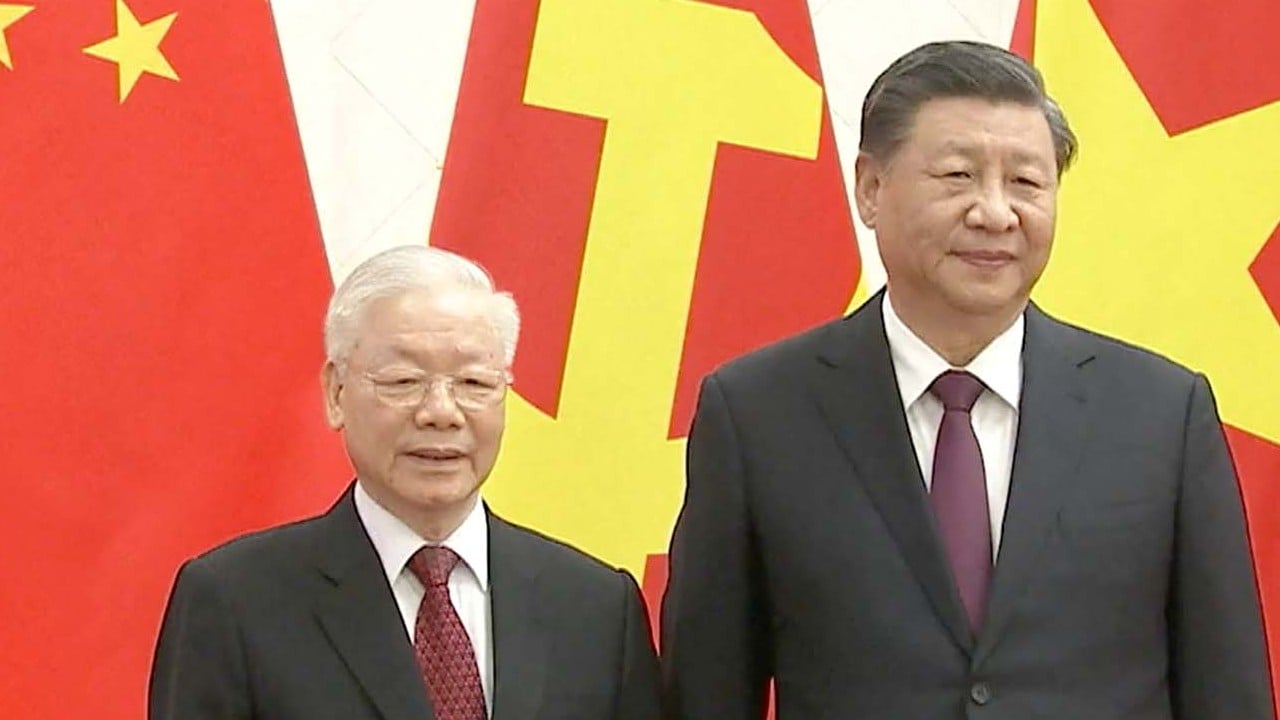
South Korea looks to tap Asean supply chains as trade deficit with China adds to worries of overreliance
- South Korean President Yoon Suk-yeol held a trade strategy meeting this week in which easing private firms’ reliance on China was top of the agenda
- Seoul has pledged to stabilise domestic supply chains, allocate more money for R&D and strengthen supply chain ties with Southeast Asian nations
The South Korean government is rolling out support to ease the private sector’s reliance on Chinese supply chains, while strengthening alternatives in Southeast Asia as part of a broader strategy to reverse the country’s trade deficit.
Amid mounting concern, South Korean president Yoon Suk-yeol hosted a trade strategy meeting on Wednesday attended by key government officials and industry leaders. While a range of region-specific policies were discussed, Yoon emphasised the government’s role in helping the private sector thrive.
“Although the government adopts a view that economic growth should be led by the private sector, the matter can’t just be left to the private companies for the country’s exports to grow. It requires active and pre-emptive support from the government,” he said.
The government wants to diversify imports and exports as the trade dependence on China is too high
Seoul is aware that South Korea and China are producing many of the same goods for export. At the same time, the country’s reliance on its larger neighbour for raw materials is intensifying.
“The government wants to diversify imports and exports as the trade dependence on China is too high. Similar discussions were had when our trade dependence on the US was very high,” said Kang Sung-jin, a professor of economics at Korea University.
“The purpose of such diversification is to mitigate risk because a high dependence on a specific country weakens political autonomy and makes it difficult to take an advantageous position in trade disputes.”
To deal with the problem, the government wants to ease reliance on Chinese supply chains and grow the footprint of South Korea’s high-value added industries in the mainland.
The government said it will help stabilise and diversify domestic supply chains by advancing early warning systems for key materials and supporting companies to stock products from a range of different countries.
South Korea will also allocate an additional US$100 million next year for research and development in the materials, parts and equipment industries.
The government’s push to reduce reliance on China contrasts with its efforts to help Korean companies expand supply chains among the Association of Southeast Asian Nations (Asean).
While diversifying China supply chains was a focus of Wednesday’s meeting, the government also touched on the need for diversification within the Asean region.
The government announced a “Vietnam plus” strategy, in which South Korean industries should aim to diversify supply chains within Asean that are as of now too focused on Vietnam. These should be expanded to Indonesia and Thailand, the government said.
Companies that wish to relocate from China to a third country, or back to South Korea, will receive support from the government.
South Korean companies in high value-added fields such as consumer goods, services and eco-friendly business will also receive aid if they are entering the Chinese market.
In particular, they will get help from South Korea’s trade promotion organisations that are dotted throughout major Chinese cities such as Hangzhou, Shenzhen and Shanghai.


